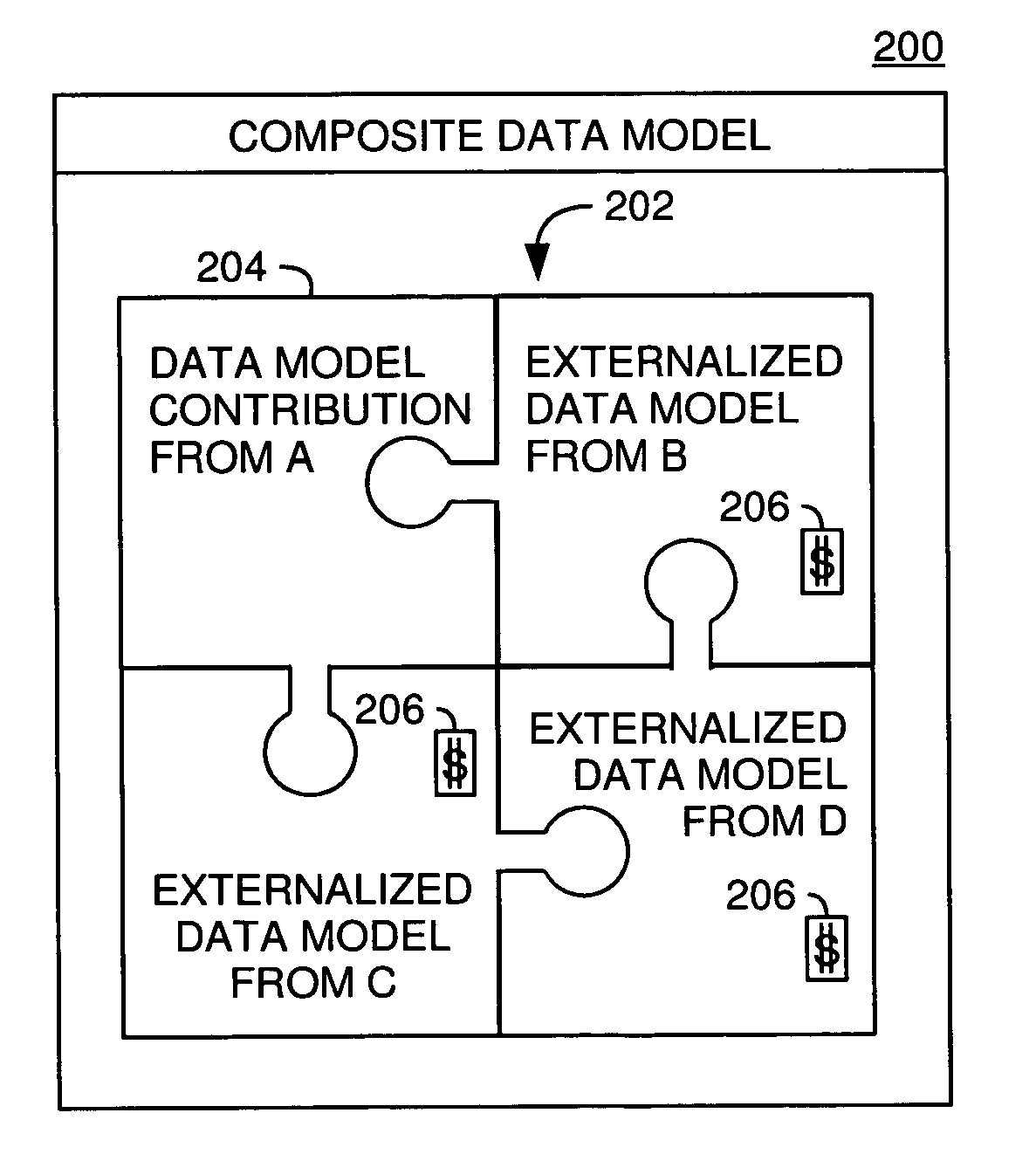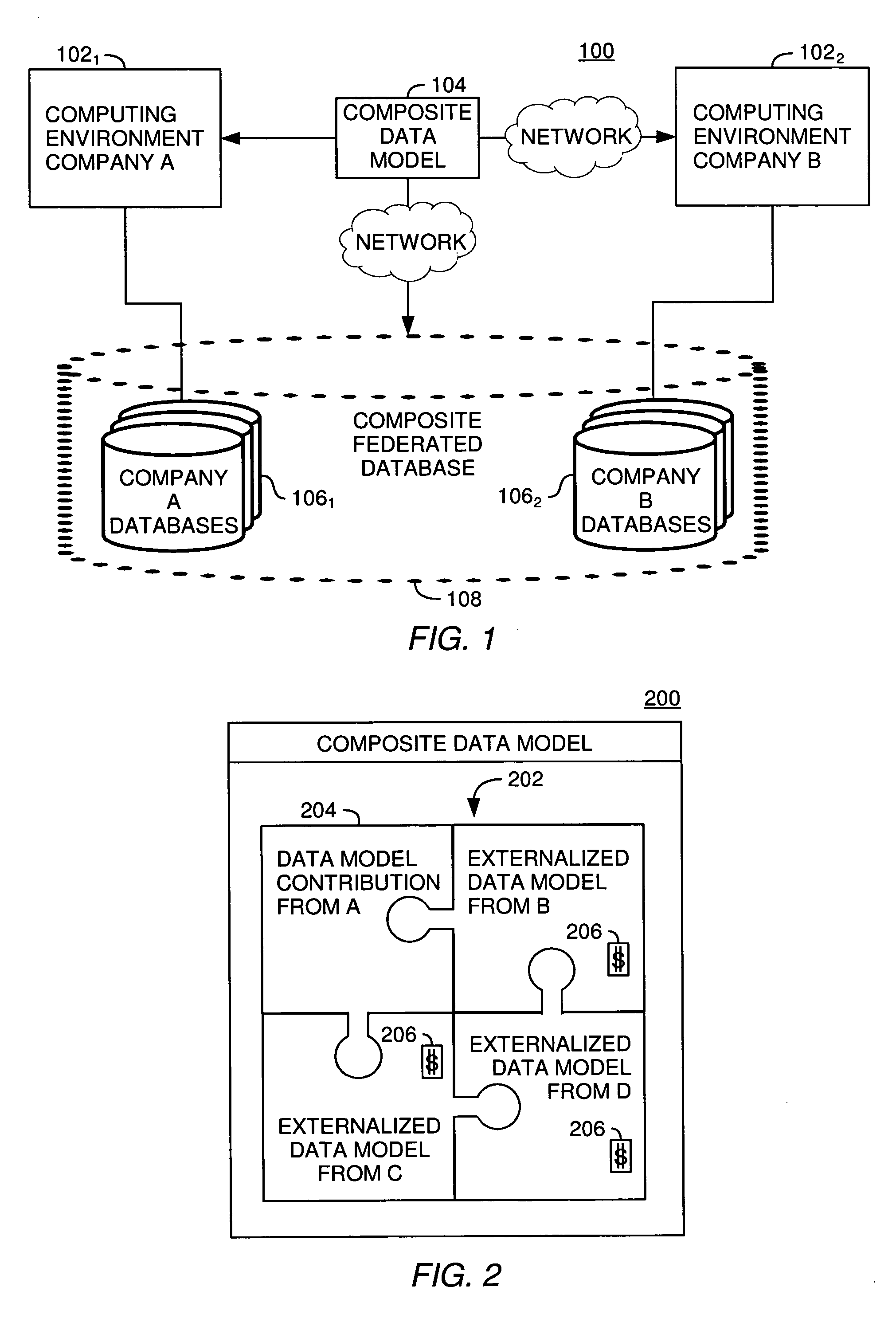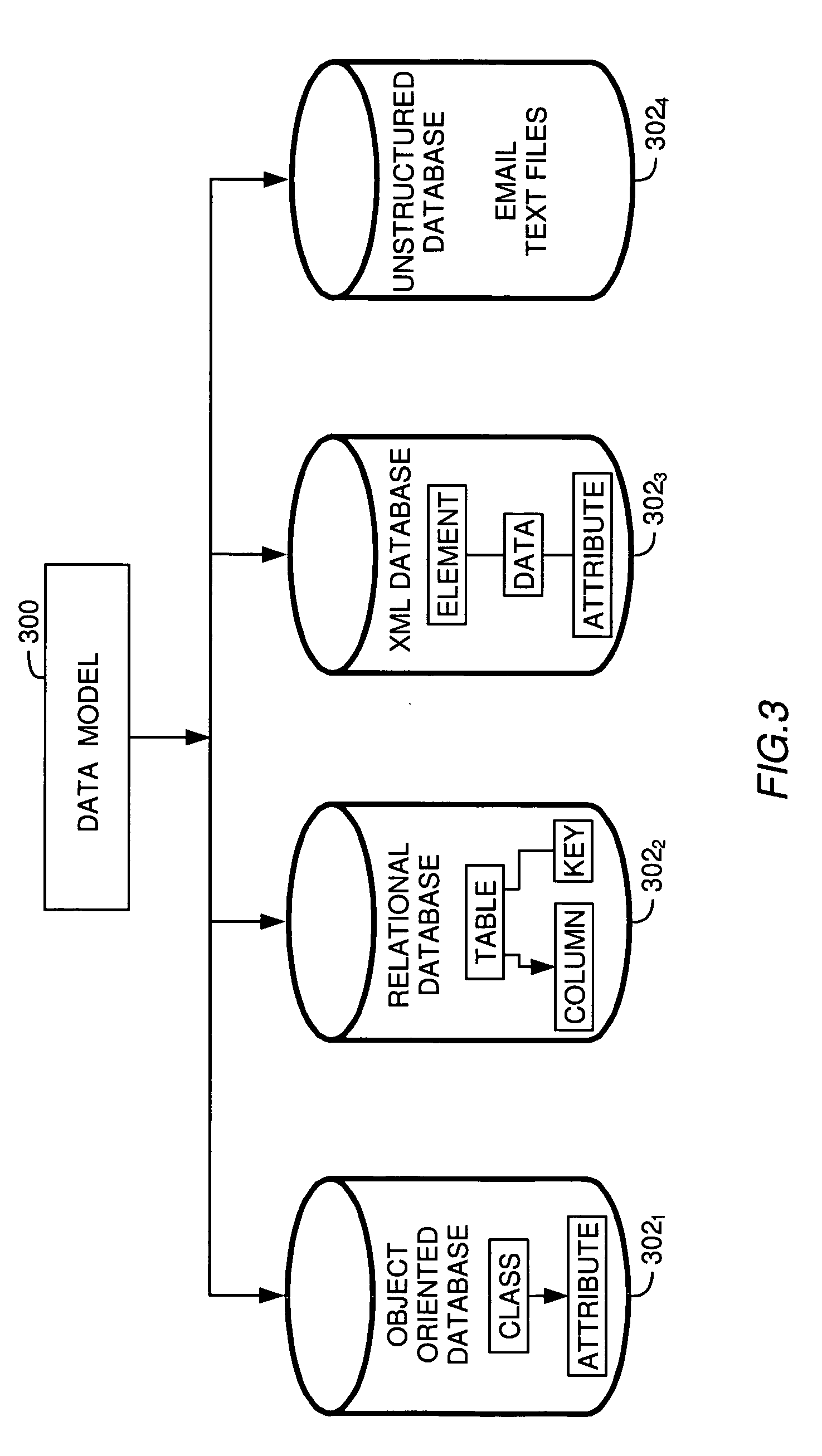Fee-based model based on database federation and query support
a database and model technology, applied in the field of methods for quantifying value, can solve the problems of prohibitive and wasteful for a single party to acquire sufficient data, and research studies often require a large volume of data
- Summary
- Abstract
- Description
- Claims
- Application Information
AI Technical Summary
Problems solved by technology
Method used
Image
Examples
Embodiment Construction
[0029] The present invention is generally directed to a method for calculating the fees charged to different entities for accessing data in a database using a query application. Generally, a first entity that controls a set of databases externalizes a data model describing what data is stored in the databases and a structure of the externalized data (i.e., a database schema). The externalized data model may also indicate how fees will be assessed for accessing data according to the data model. A second entity that controls its own set of databases may construct a composite data model defining a database schema referencing both sets of databases (i.e., the first entities' set of databases and its own set). The combined data collection is commonly referred to as a federated database. Using the composite data model, the second entity may query the federated database as though it were a single construct and retrieve data from both the databases it controls as well as from the databases ...
PUM
 Login to View More
Login to View More Abstract
Description
Claims
Application Information
 Login to View More
Login to View More - R&D
- Intellectual Property
- Life Sciences
- Materials
- Tech Scout
- Unparalleled Data Quality
- Higher Quality Content
- 60% Fewer Hallucinations
Browse by: Latest US Patents, China's latest patents, Technical Efficacy Thesaurus, Application Domain, Technology Topic, Popular Technical Reports.
© 2025 PatSnap. All rights reserved.Legal|Privacy policy|Modern Slavery Act Transparency Statement|Sitemap|About US| Contact US: help@patsnap.com



